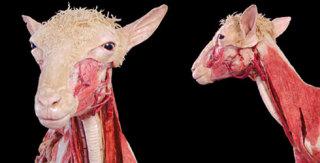
If you've had any desire to get under the skin of just about any species of animal, then you have to get to London sometime between now and September and see the Animals Inside Out exhibit at the British Natural History Museum. But be prepared...
... The 100 animals in the exhibit are all skinned.
Relax. They are dead. And they died humanely because they could not be saved from whatever disease or injury they suffered, not because someone wanted to skin them.
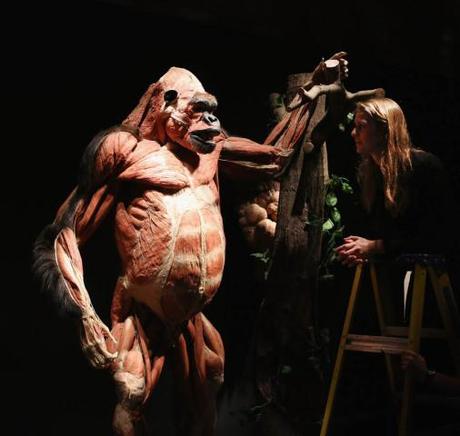
But after death, they were transported from their respective environs by veterinarians to the laboratories of German scientist, Dr. Gunther von Hagens so that he could very gently and carefully remove their skins through a process he developed in 1977 called plastination.
Plastination is a preservation process invented by von Hagens to enhance medical and scientific knowledge of each species of animal. It is conducted by removing alll water and fatty tissues from the body and replacing them with polymers. The process stops decay of the remaining body tissues immediately.
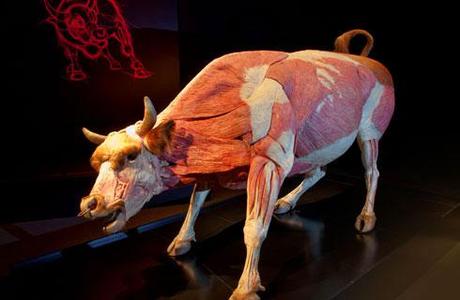
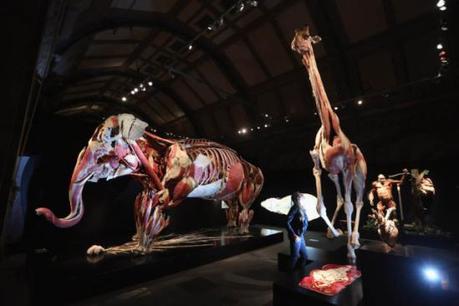
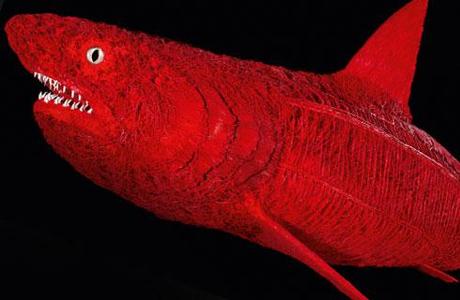
The British Natural History Museum and von Hagens' support team apparently did a fantastic job displaying the 100 animals in environments suggestive of their natural habitats.
Charter trip to London, anyone?
for more information about the exhibit and the process of plastination, visit the British Natural History Museum and Gunther von Hagens Body Worlds. via The Guardian
That's the buzz for today!

